The Early History of the Marist Sisters – Part 1 of 3
Bi -Centenary
In October 2017, the Marist Sisters celebrated their bi-centenary. Jeanne Marie Chavoin and Marie Jotillon left their home village, Coutouvre, in 1817, to travel to Cerdon, to join the two Fathers Colin.
When I was in the novitiate in 1960 we heard almost nothing of Jeanne Marie Chavoin. Our novice mistress gave us talks on Jean-Claude Colin, our Founder, and his spirituality. Today we continue to be grateful to him for his vision and the spirituality we inherited from him. Strangely, though, I have no recollection of her telling us anything of our own early history and of the woman we now call our Foundress.
In the early 60s, two Marist sisters, one French and one English, were asked to work with Father Jean Coste SM in his research into the early history of the Marists. As a result, during the 60s, we received two wonderful volumes: the Correspondence and the Recollections of Jeanne Marie Chavoin - Mother Saint Joseph.
In other words, we Marist sisters ‘discovered’ our Foundress! I remember that as a young sister at Mount Albert I was absolutely enthralled as I read her life, got to know her as a person, and learned how our congregation had begun and grown.
Marist History begins with Mary’s revelation to Jean-Claude Courveille at le Puy, but the history of the Marist sisters begins in the village of Coutouvre in the Roanne district of France. Coutouvre was then part of the diocese of Lyons. Jeanne Marie Chavoin was born and baptised on the 29 August 1789, the first of two daughters born to Theodore Chavoin and Jeanne Verchère.
Jeanne Marie’s father was a master tailor and their house, still standing today, was a busy place, as his customers came and went. The youthful Jeanne Marie was described later as having a cheerful manner, an open, agreeable countenance and rare frankness. She was about 5’ 5” tall (165.1cm), and Philipon’s portrait shows her to be of solid build. It seems that Jeanne Marie never went to school but was taught how to read and write by her parents.
Other characteristics of the young Jeanne Marie which were noted by her contemporaries: she had an unbounded trust in Providence, profound and genuine compassion for the poor, sound judgement, a remarkable aptitude for business and a gift for organising. As a young woman in Coutouvre she was the sacristan and so had the key of the church and would spend long hours praying there during the night. All these characteristics were exemplified in her future life as Foundress and superior of the Marist Sisters.
A couple of stories from Jeanne Marie's youth
A mason in the town, having lost his wife, was left with a little girl of 5, Françoise. To relieve him of his anxiety that his little girl was alone while he continued to earn his living, Jeanne-Marie took the little girl to her own room and looked after her until she could make some arrangements for her. Another anecdote: Jeanne Marie had a list of the destitute and outcast in the town. One was a woman with cancer whom she nursed. Apparently, she kissed the cancer one day and the wound disappeared. Sr Pelagie, who told the story years later, said that the whole village believed in the cure.
"A congregation ... yet to be founded"
About 1806, a clerical student called Jean Philibert Lefranc spent some time in Coutouvre because of ill-health. He formed a group called the Association of Divine Love, composed of young women and some widows. The object of this group was to foster a life of prayer and charitable work. Lefranc drew up a short rule of spiritual conduct for them. Jeanne Marie was a member and invited a younger friend of hers, Marie Jotillon, to become a member too. Jeanne Marie had been worried about some tendencies to vanity she saw in her young friend. On her death bed Marie said of Jeanne Marie: “It was she who brought me forth to the life of grace”. As Marie’s body was being taken away for burial Jeanne Marie said: “There goes a half of myself”. The two made a retreat at the Chartreuse in Lyons about 1807. During this time Jeanne Marie spoke to Lefranc about her desire to consecrate her life to God and her uncertainty about where God wanted her to go. Lefranc’s words were prophetic and stayed with her: “You are not meant for a congregation already established but for one yet to be founded”.
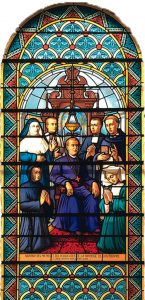
Window in the Coutouvre church:
"Remember the priests and religious from Coutouvre parish. (Abbé Joseph Auclair, Curé)". Jeanne Marie Chavoin is at the back left.
In fact, she received several offers, including two from Cardinal Fesch, Archbishop of Lyons, but rejected them all. It was only in 1817, when she was already 31 years old, that she received a letter from Pierre Colin, brother of Jean-Claude and parish priest of Cerdon, inviting her and her friend Marie to come to Cerdon to found the female branch of the Society of Mary. Pierre had been curate in Coutouvre and so knew Jeanne Marie well. She knew immediately that the invitation came from God and left with no hesitation at all. She never returned to Coutouvre, though at the end of her life she was close enough to have been able to travel there in quite a short time. Even when Jeanne Marie and Marie Jotillon arrived at Cerdon in October 1817, they had to wait 6 years before they were able to begin the new congregation formally, by coming together in community.
This article is an edited version of a paper delivered in Auckland in 2017. The paper was published in Forum Novum on the Society of Mary website -- www.maristsm.org/en/forum-novum.aspx -- and it is used with the permission of Fr Alois Greiler SM, the editor of Forum Novum. Photos: Fr Kevin Head SM
To be continued
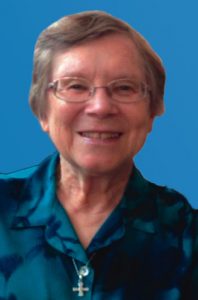
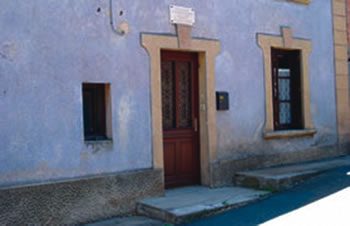
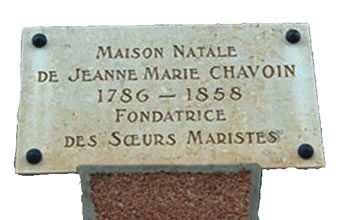
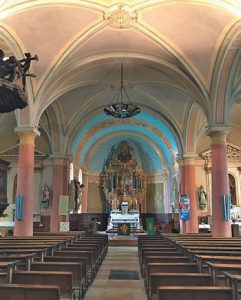
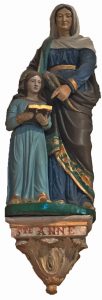
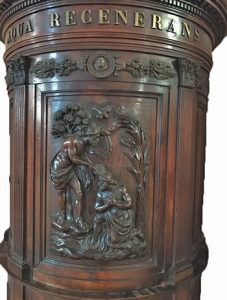
 Entries(RSS)
Entries(RSS)